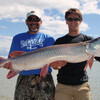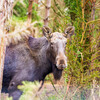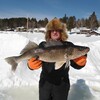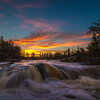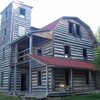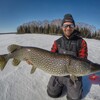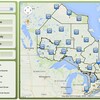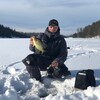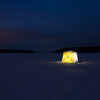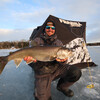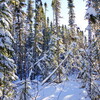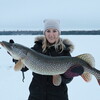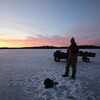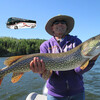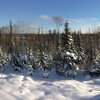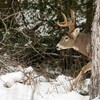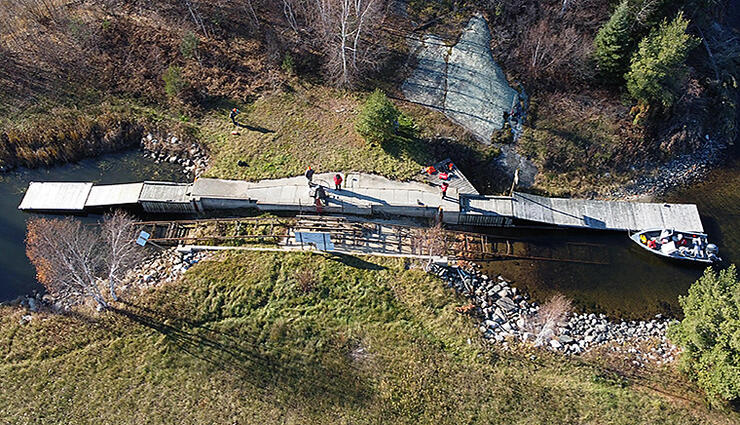Turtle Portage on Lake of the Woods: Detouring the Aulneau Peninsula
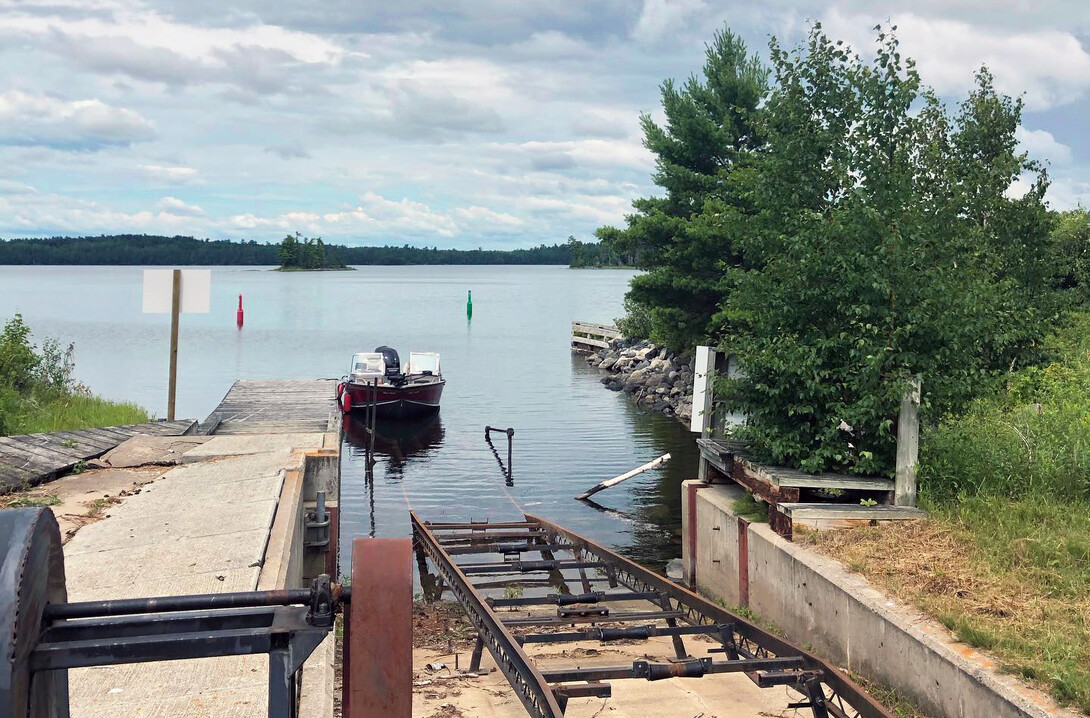
Have you boated or fished Lake of the Woods? If not, you’ve surely heard of the massive lake that straddles the Canada/U.S. border. With its over 14,500 islands, the scenery on Lake of the Woods is phenomenal. The thousands of miles of shoreline make for great fishing as well. Amongst the water and islands lies the great Aulneau Peninsula, the largest landmass on Lake of the Woods. It's so big, that it even has its own system of lakes, rivers, and ponds.
The only reason it is a peninsula is the narrow piece of land at Turtle Portage. The Turtle Portage allows boaters to travel between Whitefish Bay and Sabaskong Bay on Lake of the Woods. Turtle Portage Channel is situated northeast of Turtle Lake, and south of Alfred Inlet.
If not for this shortcut, boaters wanting to go from Whitefish Bay to Sabaskong Bay would have to boat the long journey around the Aulneau Peninsula. That trip is over 145 km (90 miles) around the Aulneau.
Over the years, there have been several different ways to cross the Turtle Portage - a channel, a lock system, a roller way, and a trolley system - none have been perfect and sometimes downright unreliable.
In 2018, the hand-operated, almost 20-year-old Turtle Portage Marine Railway, that allowed boaters to move their boats and canoes overland between the two bays was at the end of its lifespan.
The Ministry of Natural Resources and Forestry (MNRF) declared it was getting too expensive to maintain and decided to decommission the portage. Residents, visitors, and cottagers were obviously dismayed at the prospect of not having this quick access to both bays. 145 km is not just a small inconvenience. It’s a major trip to boat around the peninsula.
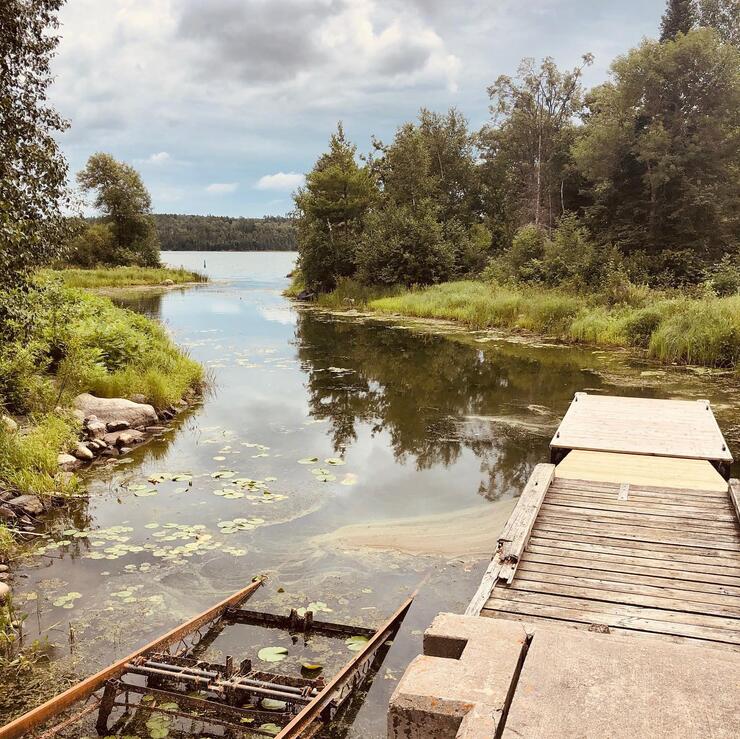
But the MNRF wasn’t wrong, the system was old, poorly designed, and unreliable. Often user error was also to blame as some did not follow the rules. If you went from one bay to the next, there was no guarantee that it would be working on your way back. The single cart trolley system was pulled using a hand crank along the track. It could pull one boat over at a time and was used approximately 500 times in 2018. The government could not justify the maintenance costs for so little use.
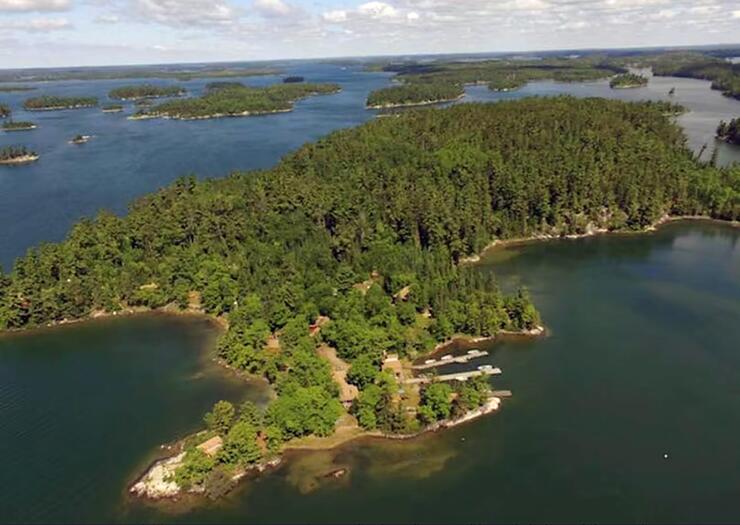
But would it get more use if it was reliable? Probably. Many times, anglers would trailer and put their boat in at Vic and Dot’s on Whitefish Bay and go over the portage to fish Sabaskong Bay. Upon returning, they would go to cross, and often, the portage would be out of commission and they’d have to boat around the huge peninsula to get back to their trailer. This was not fun!
Wayne Helliar, owner and operator of Helliar’s Resort in Nestor Falls, knows many anglers that like to use the crossing.
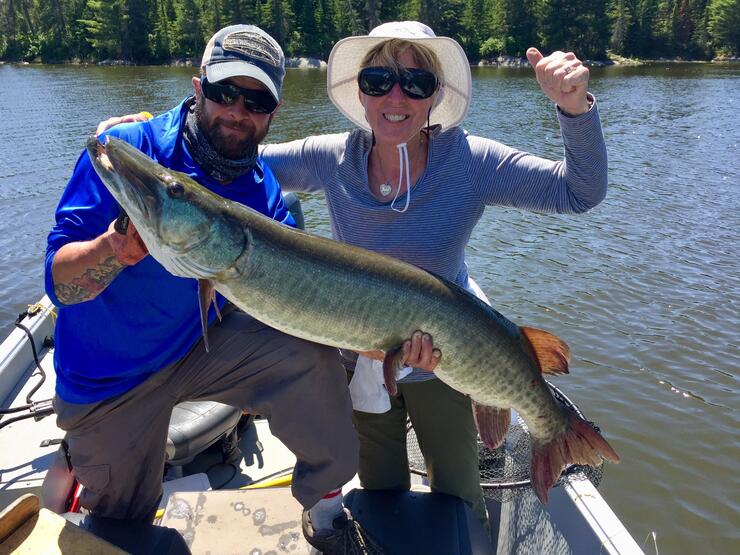
After an outcry from several tourist outfitters, communities, and anglers, the MNR held a series of public consultation meetings in 2019 about the closure. While the MNRF did not maintain the portage any longer, Vic and Dot’s Camp helped to maintain it in the interim, as they and other outfitters had helped out in the past.
New Funding in 2022
In January 2022, the Ontario government announced that they would invest over $800,000 to revitalize the Turtle Portage Marine Railway on Lake of the Woods! The Turtle Portage Marine Railway will be upgraded to improve its functionality, safety, and reliability, allowing for more recreational boating opportunities on the lake.
See the Turtle River Marine Railway in action in the following video on Lake of the Woods. Start the video at 7:54 for information on the Turtle Portage, but watch the whole video if you have time, it’s fantastic.
If you would like to see more about Lake of the Woods watch this.
Let’s take a look back at the history of the Turtle Portage over the years
The late fifties
In the low-lying area at Turtle Portage, local camp owners started a channel to permit the passage of small boats during high water. It was further deepened in 1958 which was a low-water year.
1960
The channel was dredged deeper to allow boaters to pass through to allow access to both bays of the lake. In 1960, the Federal Department of Public Works dredged the channel further on request from the Nestor Falls camp owners in order to accommodate marine traffic and provide an additional access route between the two bays. Some boulders were removed in 1961 and the government was in favour of keeping the channel open to allow for greater ease of travel. The surface width of the channel was approximately 35 to 40 feet wide, 4-5 feet deep and approximately 500 feet in length.
Unfortunately, the opening of the channel also allowed for the flow of water between the two bays. There was a steady flow from south to north due to a normal 0.3' difference in the water levels - meaning the algae-rich waters from Sabaskong Bay could move into the clear waters of Whitefish Bay. This created a very serious impact on the cold water lake trout fishery and its associated habitat. In the summer of 1966, the Federal Department of Public Works was contacted by the Department of Lands and Forest over concerns that they were to do further dredging. It was thought the straightening of the channel would allow for safer navigation at low water levels and would not alter the clarity of the water on either side of the channel. It was felt that the benefits to be gained by dredging surpassed by far the objections raised regarding water clarity and quality.
1970
In early 1973, the Lake of the Woods International Sailing Association made a request to John Reid M.P. for Kenora Rainy River and the Department of Public Works to dredge the channel and deepen it to a 6.5' draft so that sailors in the southern part of the lake could partake in the 5-day regatta, the LOWISA, in Kenora. Tourist operators and local residents of Sioux Narrows-Nestor Falls and Kenora contacted the MNR office stating their concern about Whitefish Bay's water quality and started a petition. The Ministry contacted John Reid M.P. stating the environmental concerns and those of the area residents. Since Mr. Reid had not considered the environmental impacts, the work was put on hold until a meeting between MNR and Public Works could take place and the impacts discussed with an informed decision agreed upon.
As the channel was the responsibility of the Dept. of Public Works the final decision was theirs and the channel was blasted out so that sailboats could access the north end of the lake.
For many years MNR biologists and area tourist operators had been requesting some sort of action to correct the continual deterioration of water quality and trout habitat caused by the open channel. The MNR and the Ministry of the Environment conducted water quality sampling from 1974-1978. Seeing the effects on Whitefish Bay's water quality, the Ministries recommended that in order to prevent long-term deterioration of water quality and lake trout habitat in Whitefish Bay, the flow-through Turtle Portage should be significantly reduced or eliminated. Up until 1978 the Dept. of Public Works/Transport Canada would not support the closing of the channel and limiting the access via any type of over land marine railway.
1980
However, after several years of consultation and concerns about Sabaskong Bay and Whitefish Bay being two very different bodies of water. (Whitefish Bay, is a deep, crystal clear part of Lake of the Woods that has a huge trout fishery. The effects of the algae-rich water in Sabaskong Bay had people worried that it would harm the trout fishery. Consequently, the channel was converted into a lock system in 1986/87.
The lock system was a horizontal rotating double gate structure. The geometry of the assembly was such that one gate was closed when the other gate was fully opened. The boat owner would find that they would have to operate the gate either once or twice depending on the previous user. They thought this system would resolve approximately 90% of the water transfer issue and still allow boat passage through the channel.
1990
The lock system did not appear to be improving the water quality of Whitefish Bay. In the early 1990s, the channel was filled in and a roller way was built to cross the 400-foot narrows on the peninsula.
It was built using a manual capstan wheel and cable system that would open and close the gates. However, it was not as effective as anticipated in keeping the murkier water from Turtle Lake and Sabaskong Bay from entering the pristine waters of Whitefish Bay thus, threatening the lake trout habitat and population.
2000
The roller way from the 90s was upgraded to a marine railway transfer system in 2000. The system used a boat dolly mounted on a railway track that is manually operated to move boats over the height of land.
Here is a video showing footage from crossing the portage in 2009.
In 2018, the almost 20-year-old Turtle Portage Marine Railway which allowed boaters to move their boat overland between the two bays was at the end of its lifespan. The government was not too interested in maintaining it or rebuilding a new system.
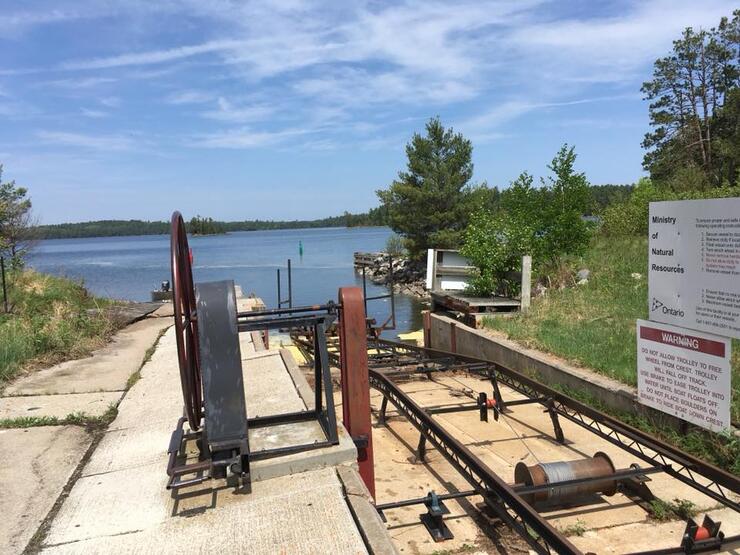
With the potential decommissioning and closure of the marine railway in 2019, the Ministry of Natural Resources and Forestry hosted a series of public information meetings about the closure.
James Williams, Integrated Resource Management Technical Specialist, related two options for improvements rather than decommissioning the system.
- The basic requirement is to extend the service life of the marine railway by 10 years at a cost of $70,000.
- A major overhaul of the system including the basic repairs as well as significant upgrades to last 20 more years is estimated at $200,000.
It was quiet for a while following the meetings in the Fall of 2019. The marine railway system was still operational. Kenora District MNRF received a one-time funding commitment from the ministry to perform modest upgrades at the facility, and the intent is to make the system more reliable and user-friendly.
While most of the work was not slated to take place until fall 2020 at the earliest, a new dock was installed on the south side to improve access to the facility.
In January 2022, the Ontario government pledged $821,686 to fix the Turtle Portage Marine Railway. It’s an important piece of recreational infrastructure to boaters, cottagers, and anglers on Lake of the Woods.
It will be upgraded to improve its functionality, safety and reliability so that boaters can continue to use this shortcut from Sabaskong Bay to Whitefish Bay.
Off-site work is underway and the crossing should be ready for boaters spring of 2022.
Will you cross the upgraded Turtle Portage?
Heading north towards the Turtle Portage, the Aulneau Peninsula will be on your left (to the west). Follow the posted instructions for us and let's safely enjoy this new system for the next 20 years!
Recommended Articles
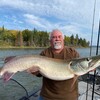
Is the 1,400 Kilometre Drive to Northwest Ontario For a Fishing Trip Worth it?
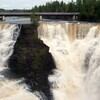
8 must-see waterfalls

6 Ways to Get Your 10,000 Steps This Fall
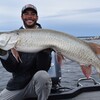
Top 5 Reasons You Should Be Fishing in Morson, Ontario
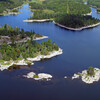
Discover The Winnipeg River
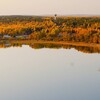
Enjoy Sunset Country's Fall Colours on Your Next Road Trip
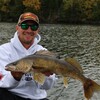
Fishing in the Fall?
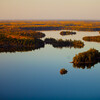
6 Reasons to Book a Fall Vacation to Sunset Country
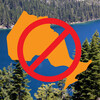
10 Reasons to Avoid Ontario’s Sunset Country
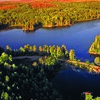
Heading Across Canada?
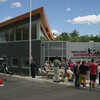
A Guide to Sunset Country Museums

The Promised Land: Best Muskie Fishing in Ontario
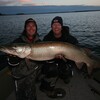
Fall Fishing Tips
5 Essential Boreal Experiences in Ontario's Sunset Country
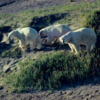
5 Obscure Facts About Northwestern Ontario: Were You Aware of These?

Great Food in Relatively Unknown Places
Outdoor Medicine

A Guide to Bringing Your Pets on Vacation to Canada
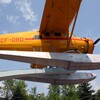
There's more than just fishing in the Red Lake Region
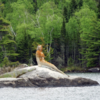
5 Amazing Sights You Can Only See By Boat
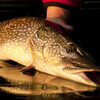
Going Fishing in Canada?
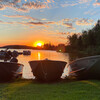
Going fishing in Ontario?
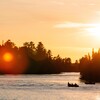
Outdoor Adventure in Ontario's Northern Paradise
Planning A Family Fishing Trip to Canada
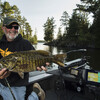
Tips from a Fishing Legend
